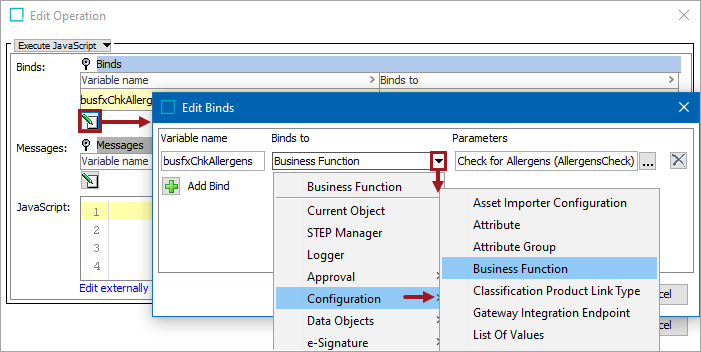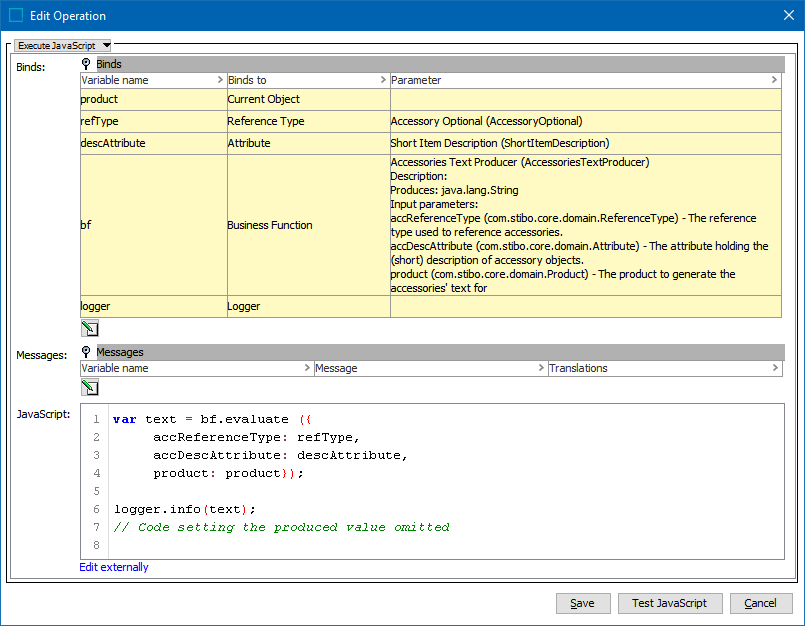Business functions are made available to other business rules via the 'Business Function' bind. As illustrated in the example section below, when a business function is bound to a business rule, the calling business rule will show the needed input and expected output of the business function.
The bind can be found within the 'Binds to' dropdown, as shown below.

For more information, refer to the Business Functions topic in the Business Rules documentation here.
Configuration
To use any bind:
- Create a business rule as defined in the Creating a Business Rule, Function, or Library topic here.
- Edit the business rule as defined in the Editing a Business Rule or Function topic here.
- In the Edit Operation dialog, add the bind to a business rule, as defined in the Adding a Bind topic in the Reference Materials documentation here.
- In the Edit Operation dialog, optionally add Messages, as defined in the Adding a Localized Business Rule Message topic here.
- In the Edit Operation dialog, add JavaScript to call the bind.
Example
The following is an example JavaScript that uses this bind.
Important: The example scripts should not be used as-is without thorough testing, including updating the script to match object and link types that exist on your system. JavaScript variable names are case-sensitive.

The business function bind provides access to an object implementing the BusinessFunctionScriptingProxy interface. For more information on the Extension API, refer to the 'BusinessFunctionScriptingProxy' interface in the Public Scripting API JavaDoc.